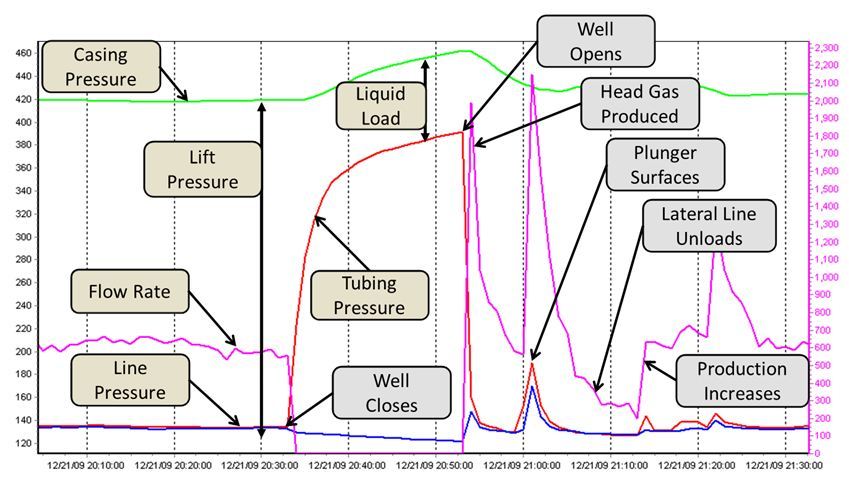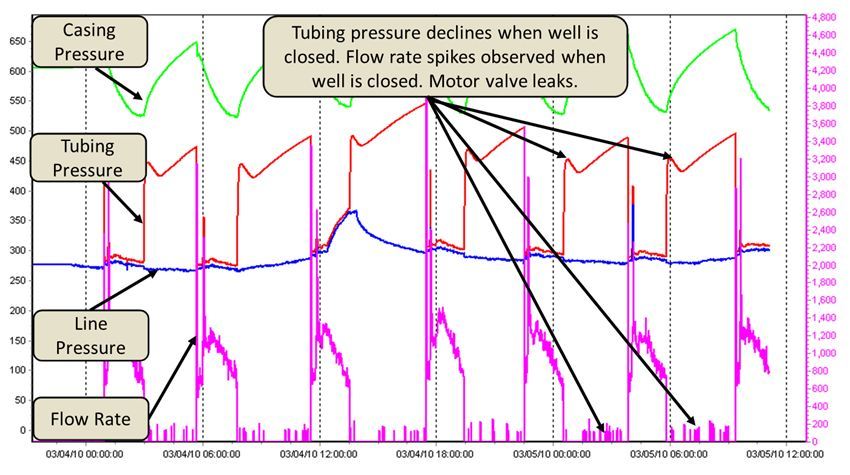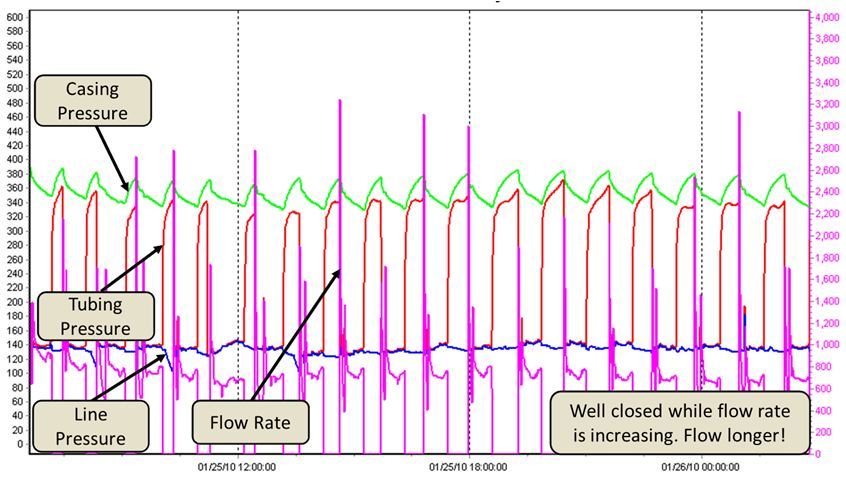Troubleshooting Plunger Lift Wells
Unplanned downtime is a constant, costly menace. A well down for 2 days a month reduces production by 6.5 % annually. For a single 350 mcf/d well, lost revenue equates to $ 25,200 / yr at $ 3/mcf. For a field of 100 wells, lost revenue is over $ 2.5 Million.
Problems are sure to arise when producing natural gas from shale reservoirs. Three key actions are necessary to mitigate the negative impact of constant production challenges:
- Detect the problem as soon as possible
- Use data to diagnose the root cause
- Rapidly implement corrective action
Ultimately, the time between problem occurrence, detection and resolution is the key to optimizing well performance.
Plunger lift controllers equipped with radios ensure critical well site signals are accessible by off-site optimizers. Controllers with a cry-out feature send alarms as e-mail or text, alerting operators to a variety of well site abnormalities; including high line pressure, missed and fast plunger arrivals. Skilled operators viewing real time minute interval pressure and flow rate data observe a numerous other potential problems prior to production decline. Deviations from the standard plunger cycle (See Fig 1) indicate a variety of well site issues, including leaking motor and/or separator dump valves (See Fig 2), holes in tubing, worn plungers, too long or short open or close times (See Fig 3), un-calibrated flow meters, standing valve candidates, etc. are all easily identifiable. Optimizing well performance requires problem detection prior to lost production.
Once detected, a rapid and accurate diagnosis minimizes lost revenue. Comprehensive data collated from each plunger cycle in conjunction with pressure/flow rate graphs are powerful tools. For each plunger cycle, data enabling informed decisions include (See Fig 4):
- Liquid load (volume and pressure) in the tubing
- Lift pressure when the well is opened (actual and Foss and Gaul)
- Plunger velocity
- Gas produced
- Liquid produced (if available)
- Total close time
Using this data, operators optimize plunger cycles and trace plunger arrival anomalies to probably causes. As an example, a missed arrival in which lift pressure and liquid load generate consistent plunger arrivals on all previous runs indicate an arrival sensor failure, damaged or stuck plunger. Adjusting the plunger cycle will not resolve these issues.
Off-site optimizers with access to real time data working in close partnership with boots on the ground well tenders rapidly implement corrective action. Optimizers remotely modify control settings as needed, while well tenders communicate un-monitored on-site observations and check/repair faulty equipment. Even with access to the above data, a fast plunger arrival sufficiently cushioned by a column of liquid which softly impacts the lubricator spring requires no adjustment to the plunger cycle. Only on-site personnel are able to gauge the force of the plunger impact in the lubricator.
Fig 1. Typical plungler cycle
Fig 2. Motor valve leak
Fig 3. Non-Optimized plunger cycle
Fig 4. Plunger cycle data



